Related Research Articles
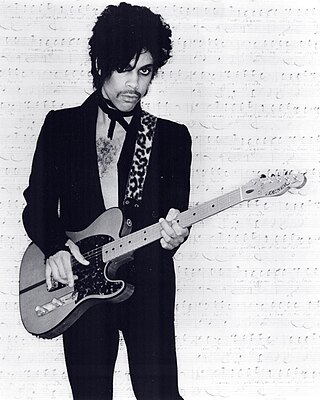
Prince Rogers Nelson was an American singer, songwriter, musician, and record producer. The recipient of numerous awards and nominations, he is widely regarded as one of the greatest musicians of his generation. He was known for his flamboyant, androgynous persona; his wide vocal range, which included a far-reaching falsetto and high-pitched screams; and his skill as a multi-instrumentalist, often preferring to play all or most of the instruments on his recordings. His music incorporated a wide variety of styles, including funk, R&B, rock, new wave, soul, synth-pop, pop, jazz, blues and hip hop. Prince produced his albums himself, pioneering the Minneapolis sound.

The Ford Model T is an automobile that was produced by the Ford Motor Company from October 1, 1908, to May 26, 1927. It is generally regarded as the first mass-affordable automobile, which made car travel available to middle-class Americans. The relatively low price was partly the result of Ford's efficient fabrication, including assembly line production instead of individual handcrafting. It was mainly designed by three engineers, Joseph A. Galamb, Eugene Farkas, and Childe Harold Wills. The Model T was colloquially known as the "Tin Lizzie", "Leaping Lena" or "flivver".

The Nissan Skyline GT-R is a Japanese sports car based on the Nissan Skyline range. The first cars named "Skyline GT-R" were produced between 1969 and 1972 under the model code KPGC10, and were successful in Japanese touring car racing events. This model was followed by a brief production run of second-generation cars, under model code KPGC110, in 1973.

The Standard Motor Company Limited was a motor vehicle manufacturer, founded in Coventry, England, in 1903 by Reginald Walter Maudslay. For many years, it manufactured Ferguson TE20 tractors powered by its Vanguard engine. All Standard's tractor assets were sold to Massey Ferguson in 1959. Standard purchased Triumph in 1945 and in 1959 officially changed its name to Standard-Triumph International and began to put the Triumph brand name on all its products. A new subsidiary took the name The Standard Motor Company Limited and took over the manufacture of the group's products.
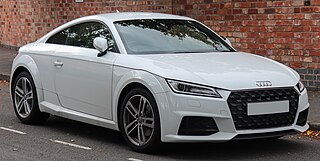
The Audi TT is a series of 2-door production sports cars and convertibles, made by Audi from 1998 to 2023. The first two generations were assembled by Audi's Hungarian subsidiary, one of the world's biggest engine making plants, using bodyshells manufactured and painted at Audi's Ingolstadt plant and parts made entirely by the Hungarian factory for the third generation.

Treacle is any uncrystallised syrup made during the refining of sugar. The most common forms of treacle are golden syrup, a pale variety, and black treacle, a darker variety similar to molasses. Black treacle has a distinctively strong, slightly bitter flavour, and a richer colour than golden syrup. Golden syrup treacle is a common sweetener and condiment in British cuisine, found in such dishes as treacle tart and treacle sponge pudding.

Trojan was a British automobile manufacturer producing light cars between 1914 and 1965, and light commercial vehicles for a short time.

The MGB is a two-door sports car manufactured and marketed from 1962 until 1980 by the British Motor Corporation (BMC), later the Austin-Morris division of British Leyland, as a four-cylinder, soft-top sports car. It was announced and its details first published on 19 September 1962. Variants include the MGB GT three-door 2+2 coupé (1965–1980), the six-cylinder sports car and coupé MGC (1967–69), and the eight-cylinder 2+2 coupé, the MGB GT V8 (1973–76).
The Lanchester Motor Company Limited was a car manufacturer located until early 1931 at Armourer Mills, Montgomery Street, Sparkbrook, Birmingham, and afterwards at Sandy Lane, Coventry England. The marque has been unused since the last Lanchester was produced in 1955. The Lanchester Motor Company Limited is still registered as an active company and accounts are filed each year, although as of 2014 it is marked as "non-trading".
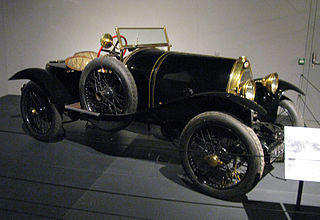
The Bugatti Type 18, also called the Garros, is an automobile produced from 1912 through 1914. Produced shortly after the start of the business, the design was something of a relic. It had much in common with the cars Ettore Bugatti had designed for Deutz Gasmotoren Fabrik but with the radiator of the Type 13. Only seven examples were built, and three are known to survive.

The Austin 7 is an economy car that was produced from 1923 until 1939 in the United Kingdom by Austin. It was nicknamed the "Baby Austin" and was at that time one of the most popular cars produced for the British market and sold well abroad. Its effect on the British market was similar to that of the Model T Ford in the US, replacing most other British economy cars and cyclecars of the early 1920s. It was also licensed and copied by companies all over the world. The first BMW car, the BMW Dixi, was a licensed Austin 7. In France they were made and sold as Rosengarts, and in the United States they were built by the American Austin Car Company. In Japan, Nissan also used the 7 design as the basis for their first cars, although not under licence. This eventually led to a 1952 agreement for Nissan to build and sell Austins in Japan under the Austin name.
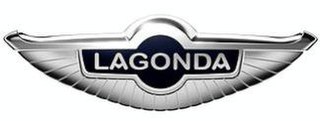
Lagonda is a British luxury car brand established in 1906, which has been owned by Aston Martin since 1947. The trade-name has not had a continuous commercial existence, being dormant several times, most recently from 1995 to 2008, 2010–2013, and 2016-onward.
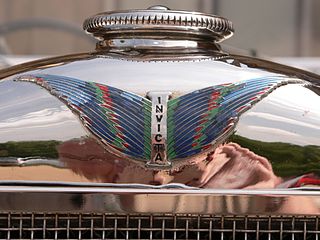
Invicta is a British automobile manufacturer. The brand has been available intermittently through successive decades. Initially, the manufacturer was based in Cobham, Surrey, England, from 1925 to 1933, then in Chelsea, London, England, from 1933 to 1938 and finally in Virginia Water, Surrey, England, from 1946 to 1950. More recently, the name was revived for the Invicta S1 sports car produced between 2004 and 2012.
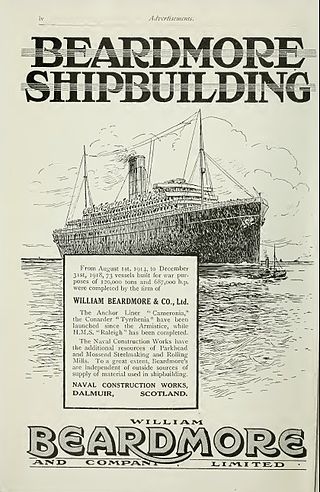
William Beardmore and Company was a British engineering and shipbuilding conglomerate based in Glasgow and the surrounding Clydeside area. It was active from 1886 to the mid-1930s and at its peak employed about 40,000 people. It was founded and owned by William Beardmore, later Lord Invernairn, after whom the Beardmore Glacier was named.

The Bentley 3 Litre was a car chassis manufactured by Bentley. The company's first, it was developed from 1919 and made available to customers' coachbuilders from 1921 to 1929. The Bentley was very much larger than the 1368 cc Bugattis that dominated racing at the time, but double the size of engine and strength compensated for the extra weight. The 4000 lb (1800 kg) car won the 24 Hours of Le Mans in 1924, with drivers John Duff and Frank Clement, and again in 1927, this time in Super Sports form, with drivers S. C. H. "Sammy" Davis and Dudley Benjafield. Its weight, size, and speed prompted Ettore Bugatti to call it "the fastest lorry in the world", which was regarded as a compliment. Built in 3 main variants, Blue label, Red Label Speed models all carrying a 5-year warranty, and the coveted and rare Green Label 100 mph cars, which only carried a 12-month warranty reflecting the high state of tune.

The Datsun Cherry (チェリー), known later as the Nissan Cherry, was a series of subcompact cars which formed Nissan's first front-wheel drive supermini model line.
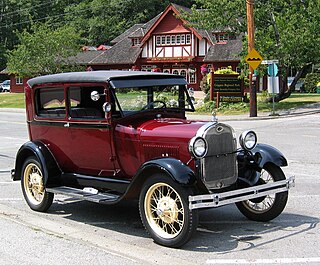
The Ford Model A was the Ford Motor Company's second market success, replacing the venerable Model T which had been produced for 18 years. It was first produced on October 20, 1927, but not introduced until December 2. This new Model A was designated a 1928 model and was available in four standard colors.
Grahame-White was an early British aircraft manufacturer, flying school and later manufacturer of cyclecars.
George Nicolas "Nick" Georgano was a British author, specialising in motoring history. His most notable work is The Complete Encyclopedia of Motorcars, first published in 1968.

The Warren-Lambert Engineering Co. Ltd. was a British automobile manufacturer that was established from 1912 to 1922 in Richmond, then in Surrey. A. Warren Lambert, was an agent for Morgan cars in Putney which he also raced. In 1912 he designed and started to manufacture a two-seat four-wheel cyclecar from premises in Uxbridge Road, Shepherd's Bush. It was well received and around 25 cars a week were being made.
References
- 1 2 Baldwin, N. (1994). A-Z of Cars of the 1920s. Devon, UK: Bay View Books. ISBN 1-870979-53-2.
- ↑ Georgano, N. (2000). Beaulieu Encyclopedia of the Automobile. London: HMSO. ISBN 1-57958-293-1.
- ↑ Jarman, Paul. "The Black Prince". beamishtransportonline.co.uk. Retrieved 11 January 2017.